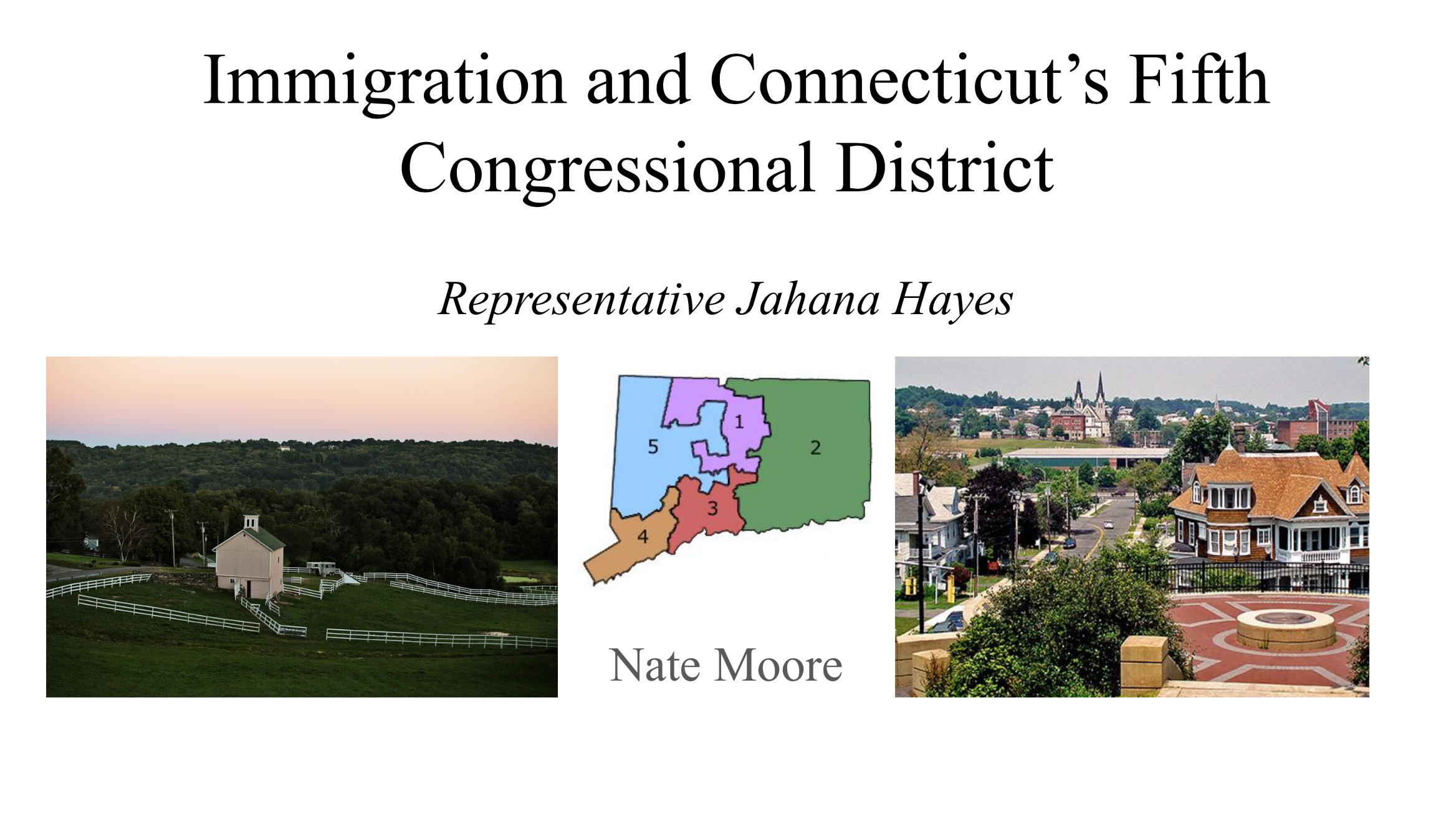
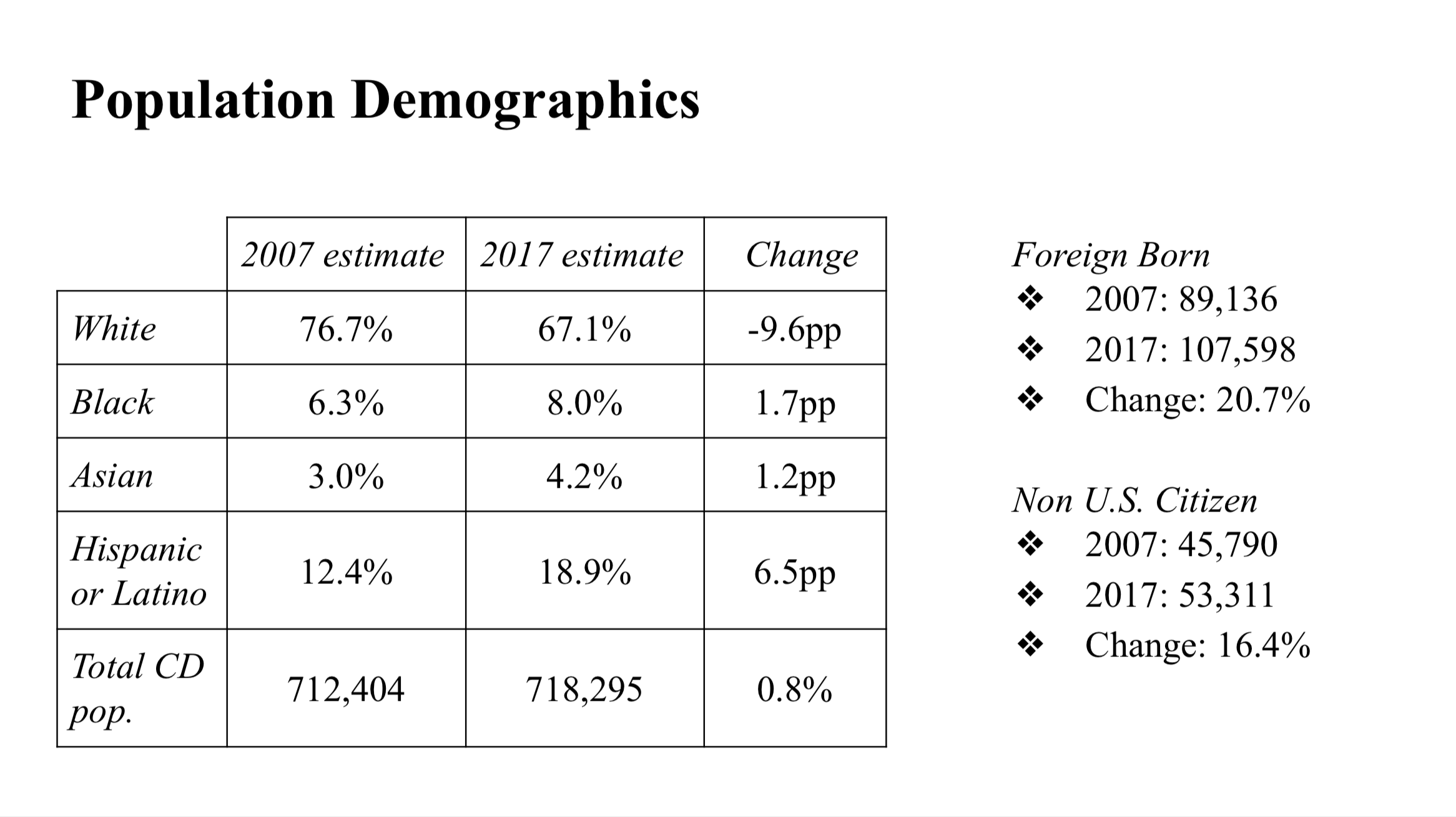
Connecticut’s Fifth Congressional District (CT-5), like the United States as a whole, has quickly become more diverse in the last decade. American Community Survey (ACS) estimates that the white share of the population dropped almost 10 percentage points between 2007 and 2017. Meanwhile, minority populations grew across all racial and ethnic demographics, especially the Hispanic/Latino population which increased 6.5 percentage points during the aforementioned decade. As a result, Connecticut has the 11th highest Hispanic population in the United States. Puerto Ricans represent over 50% of this Hispanic population and roughly 8% of the states entire population, the highest percentage in the country. Correlated to the racial and ethnic diversification, CT-5’s foreign born and non U.S. citizen populations have also rapidly grown in the past decade. A plurality of these populations are Hispanic. Increasing minority populations make CT-5 a very interesting case study for the impact of local demographic changes on immigration attitudes.
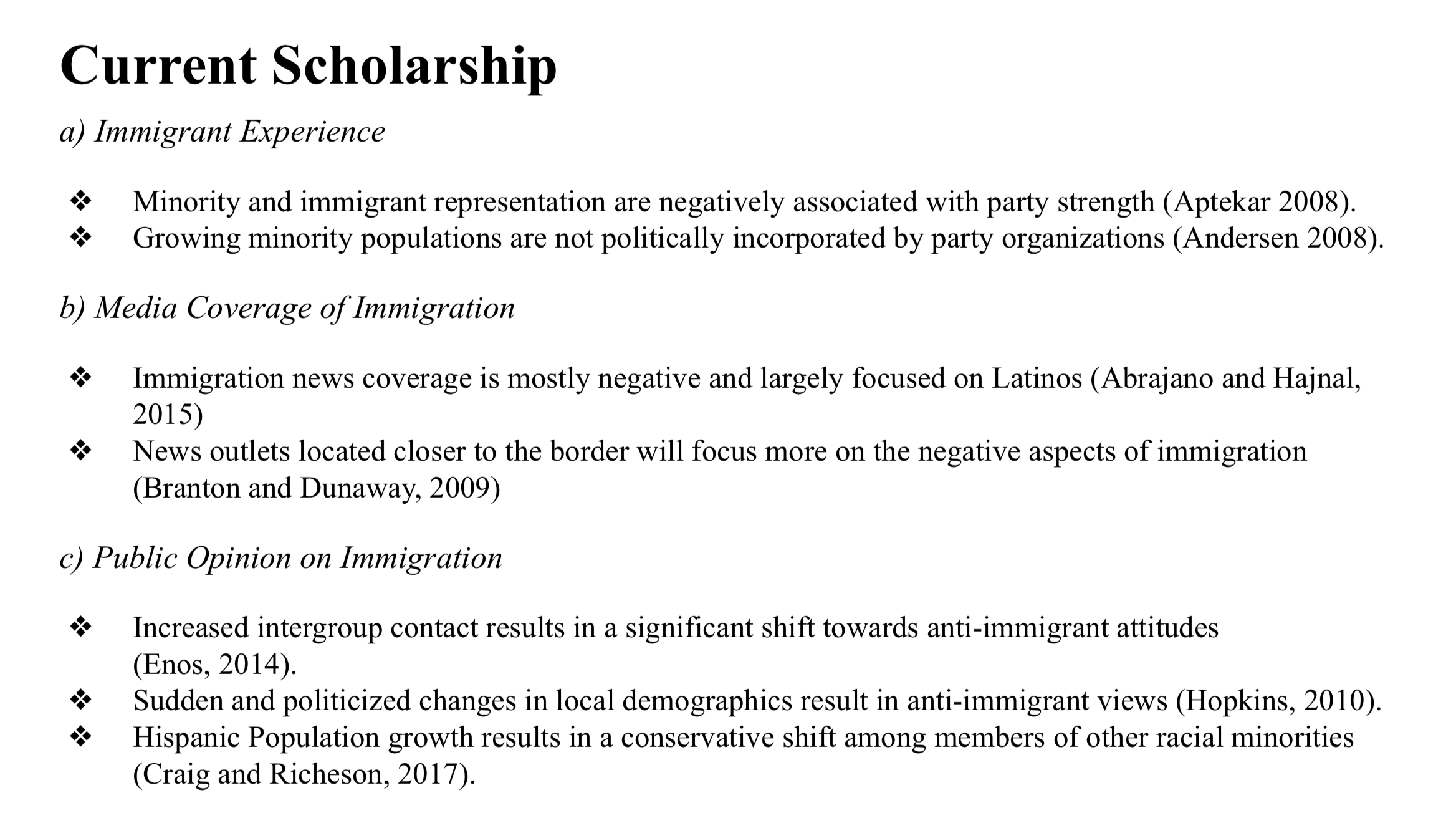
There is an abundance of research that explores the impact of local demographics on immigrant political experience, news coverage of immigration, public opinion of immigrants. While party organizations once were conducive to immigrant political incorporation, a strong local party organization, even Democratic, has the opposite effect today (Aptekar 2008; Andersen 2008). Immigrant and minority representation lags far behind native and white representation, despite growing populations of minorities across the country. In Aptekar’s study of Edison, New Jersey, the Democratic party often served as an impediment to immigrant political success. Immigrants are also hindered by consistently negative coverage in the news media, which in turn, through agenda setting and framing, can sour public opinion of immigrants and immigration. Abrajano and Hajnal find that 48.9% of immigration related articles published in the New York Times use a negative tone. Only 12.1% assume a positive tone. These suggest that immigration is indeed being framed in a negative light. Furthermore, they find coverage focuses primarily on Latino immigrants and the portion of immigrants who are undocumented. Branton and Dunaway argue the closer a news outlet is to the border, the more the publication will focus on the negative aspects of immigration. Public opinion of immigrants is shaped not only by the media, but also by changes in local demographics. Enos’ research argues white Americans who have increased contact with outgroups (in his experiment, spanish speaking confederates) will adopt stronger anti-immigrant attitudes. However, these effects wear off after a relatively short period of time.
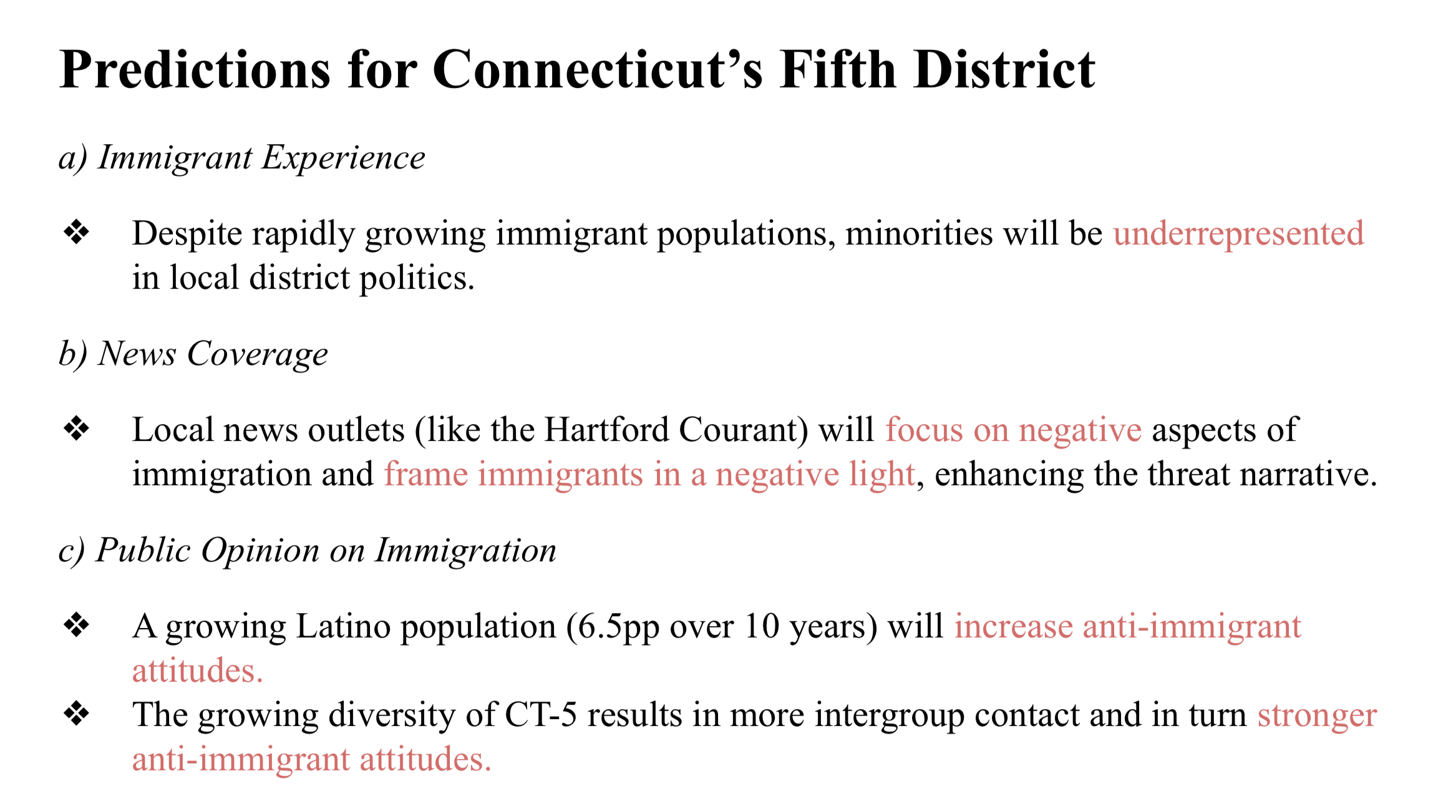
The 2018 congressional election in CT-5 featured an unlikely pair of candidates. Manny Santos, the Republican candidate, is an immigrant from Portugal. Jahana Hayes, a Democrat and the eventual winner, is an African American woman and became the first black person to represent a Connecticut congressional district. Unfortunately, however, these candidates are the exception to minority representation and political success. I predict a strong Democratic party in the District no longer prioritizes immigrant political incorporation. Even with growing minority populations, few minorities will ultimately achieve political success. Even Ms. Hayes, the 2016 national teacher of the year, was not the party backed candidate during the primary. The Hispanic share of the population in CT-5 has risen 6.5 percentage points over the last ten years. The foreign born population has risen more than 20%. With these changes comes more intergroup contact. Existing research would predict these demographic changes, combined with politicized immigration rhetoric, will result in negative local opinions of immigrants and immigration. These negative attitudes will be reflected in local news coverage of immigration. Some research, however, would predict that CT-5’s distance from the southern border will diminish the amount of negative coverage.
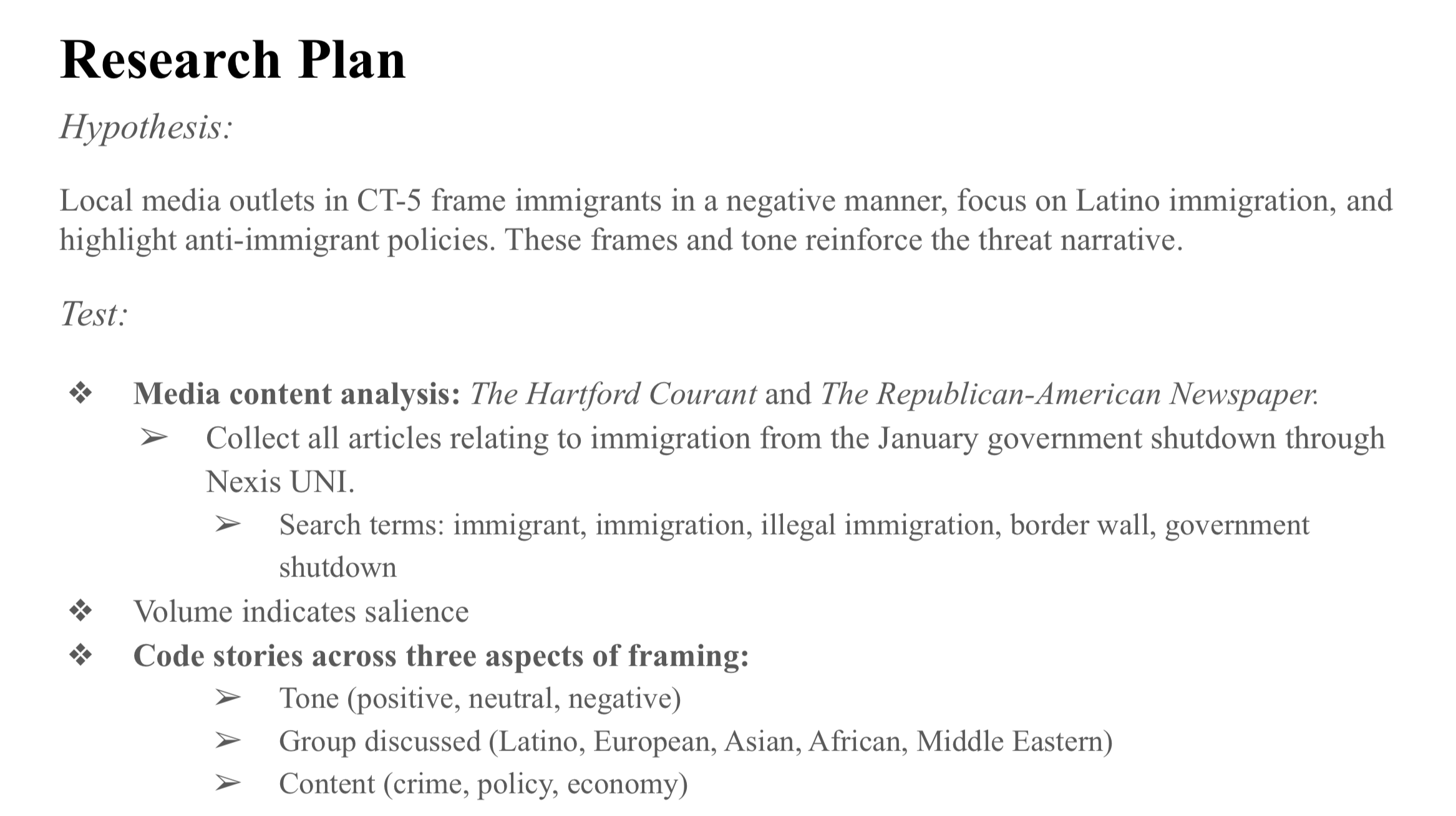
I will test my media prediction through a content analysis of two local Connecticut newspapers. I chose The Hartford Courant and The Republican-American Newspaper, which have the two largest circulations of any local paper in Connecticut. In turn, it is likely that these papers have the largest agenda setting effect on the state’s population. The Republican-American focuses on local news more so than The Courant and serves the larger Waterbury area as well as Litchfield County, the rural portion of CT-5. I will gather all articles related to immigration, including opinion pieces, published during the government shutdown, which ran from December 22, 2018 through January 22, 2019. The search terms I intend to use are “immigrant”, “immigration”, “illegal immigration”, “border wall”, and “government shutdown”. The volume of immigration articles will impact whether I can make statistically significant predictions. In my content analysis of these publications, I intend to follow a coding procedure similar to Abrajano and Hajnal and categorize stories across three aspects of framing. The first test will be for tone– positive, neutral, or negative. I predict that immigration will be framed in a negative light. The second test will code for the immigrant group discussed– Latino, European, Asian etc. I predict a large portion of articles will focus on Latino and Hispanic immigration. The final coding test will be article content. Categories include immigration policy, economic impact of immigration, and crime associated with immigration. I predict coverage across all issues, but an emphasis on the negative, anti-immigrant, side of each. I recognize a hand-coding process can be subjective, but I hope to find tools to remove any potential subjectivity. Abrajano and Hajnal utilize an automated text analysis package called RText Tools.